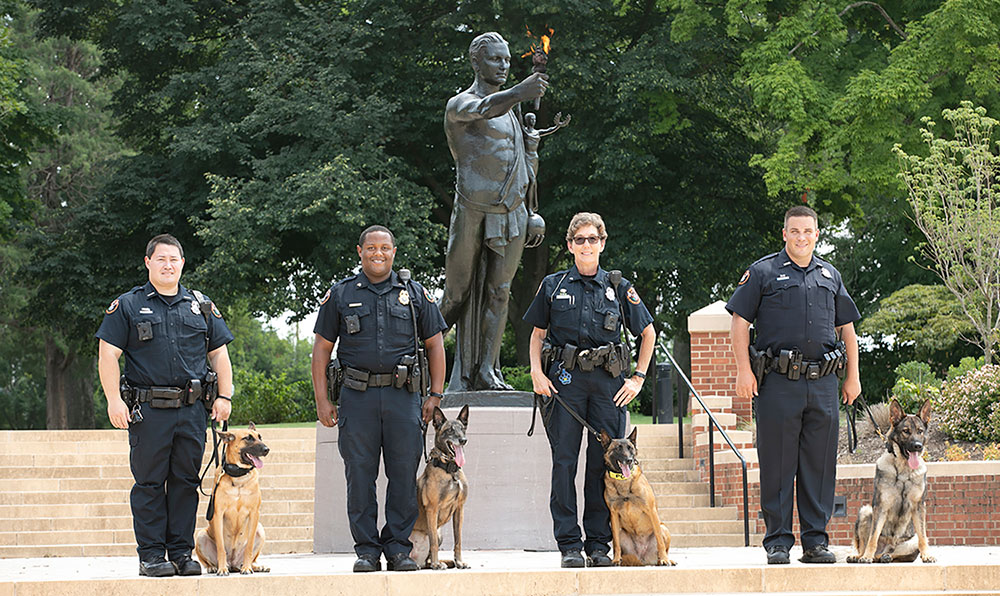
University of Tennessee, Knoxville, Police Chief Troy Lane was standing on the 50-yard line inside the University of Oklahoma’s football stadium on October 1, 2005, when a student detonated a bomb about 100 yards from the stadium, killing himself.
Lane, then assistant police chief at Kansas State University, had accompanied the Kansas State Wildcats to play the Oklahoma Sooners. The experience would influence his subsequent approach to campus security planning. He used bomb dogs while chief at the University of Wyoming. He arrived at UT in 2012 and the UT Police Department in 2013 welcomed two explosive-detecting dogs, Bira and Tica, after the Boston Marathon bombing.
This year, the UT Police Department has expanded its canine program, doubling the number of K-9 officers and dogs on the force to four teams.
“We have so many controversial things, concerts, high-level speakers, and sporting events that bring thousands of people to campus,” Lane said. “I take a bit of comfort knowing I’ve had a dog go through an area versus a couple of officers who look to see if anything is out of place.”
Three of the four UTPD K-9s are explosive-detecting dogs, with the most recent, Athena, added this past January. They are single-purpose dogs and have just one job, sniffing out bombs. They are all female Belgian Malinois.
In June, the department added a fourth dog, Bruno, a male German shepherd who serves a dual purpose: apprehension and drug detection.
Theft is the largest category of crime reported on the UT campus. Occasionally, UTPD receives reports of armed robberies and aggravated assaults. Ninety percent of the time, those crimes are drug related. And sometimes they involve students, Lane said.
“If I have an armed robbery and I know the perpetrator is armed, do I sacrifice one of our officers or send in a K-9 who is trained to take someone down and hold them until an officer gets there?” he asked.
UTPD acquired all four K-9s from Iron Heart High Performance Working Dogs in Shawnee, Kansas. The Belgian Malinois were born in Poland and the German shepherd in Germany. All were brought to the United States by Iron Heart. The dogs trained with their handlers for six weeks at the facility.
Bira and Tica, the department’s older dogs, are paired with Sergeant Cedric Roach and Corporal Mary Cameron, respectively.
Athena and Bruno, the newer dogs, are paired with Corporal John Platt and Officer Jeffrey Quirin, respectively.
The K-9s and their handlers train every Thursday for at least four hours around campus and with other area law enforcement agencies. The dogs go home with their handlers every day. They also recertify every year with a nationally recognized K-9 association.
UT Veterinary Hospital provides the dogs’ health care and nutrition plan. The police department supplies the dogs’ food, kennel, toys, and training aids, and assumes all costs associated with maintaining each K-9.
The average length of service before retirement for police dogs is eight years, Lane said.
“Whether it’s best practices or common sense, there is real value in having this K-9 program,” he said.
—
K-9 Confidential: Learn more about our K-9s and officers:
Tica and Corporal Mary Cameron
Bira and Sergeant Cedric Roach
Athena and Corporal John Platt
Bruno and Officer Jeffrey Quirin
—
CONTACT:
Lola Alapo (865-974-1094, lalapo@utk.edu)